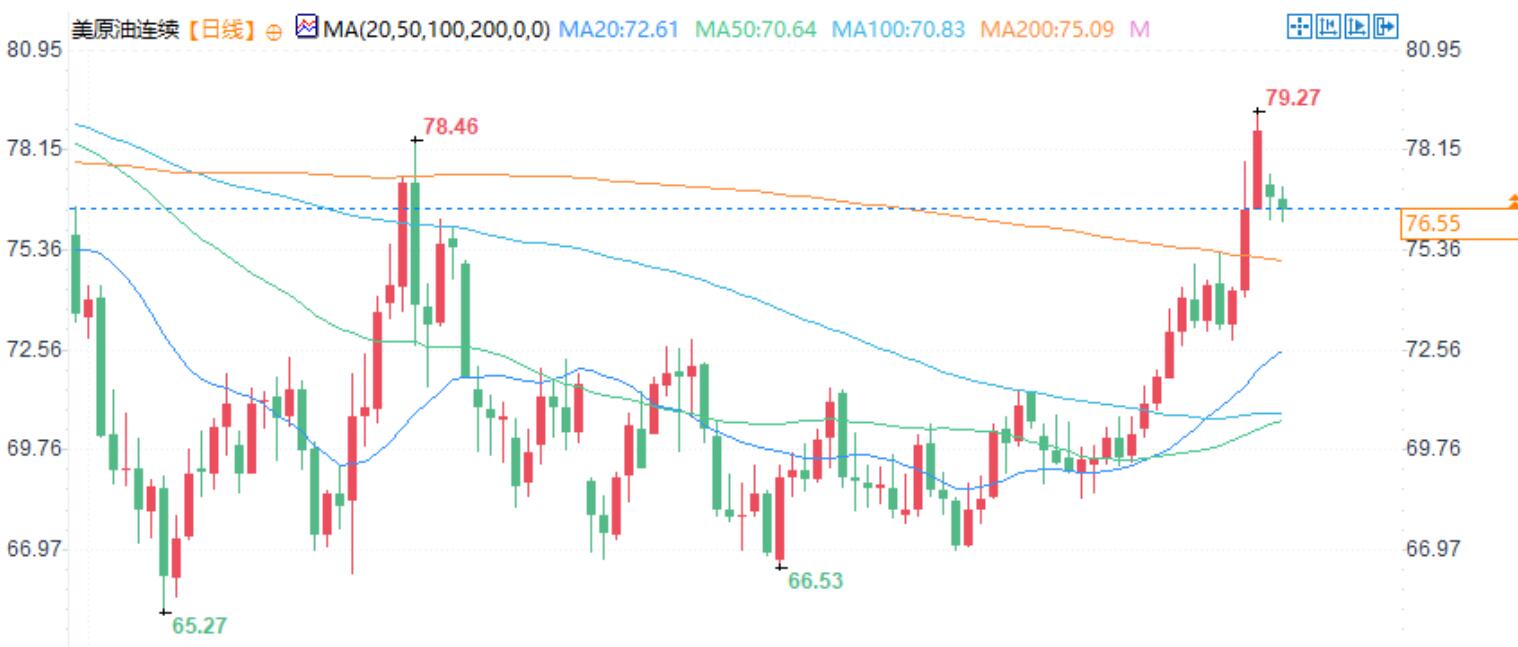Crude oil trading analysis: short selling!
On Wednesday (January 15th) during the European trading session, WTI crude oil futures remained volatile with a slight increase, reaching a high of $77.14 and a low of $76.16.
Will sanctions against Russia affect global oil supply?
The International Energy Agency (IEA) emphasized on Wednesday the risks posed by US sanctions on Russian oil exports. These measures target over 160 vessels, accounting for 22% of Russia's maritime oil transportation volume. Although previous sanctions have reduced ship activity by 90%, the International Energy Agency has pointed out that Russia may find other trade routes to limit the impact.
Despite potential disruptions, the IEA predicts that global oil supply will increase by 1.8 million barrels per day by 2025, exceeding demand growth of 1.05 million barrels per day.
Is the decline in US crude oil inventories faster than expected?
On Tuesday, the American Petroleum Institute (API) reported that US crude oil inventories unexpectedly decreased by 2.6 million barrels last week, exceeding expectations of a decrease of 1 million barrels. However, inventory in Cushing, Oklahoma increased by 600000 barrels. Gasoline and distillate inventories have significantly increased, with an increase of 5.4 million barrels and 4.88 million barrels respectively.
Traders are now turning their attention to the Energy Information Administration's (EIA) weekly supply report, which is expected to be released later on Wednesday to confirm or question API's investigation results.
Will long-term oversupply suppress oil prices?
The short-term energy outlook released by the US Energy Information Administration on Tuesday predicts that global oil production will exceed demand by 2025. It is expected that the average price of Brent crude oil will be $74 in 2025 and will drop to $66 in 2026. During this period, the demand for oil in the United States is expected to stabilize at 20.5 million barrels per day.
These predictions indicate that although traders are focused on short-term supply disruptions, in the long run, oil prices still face sustained downward pressure.
Will the new round of sanctions drive up oil prices?
After the US Treasury Department announced new sanctions on Russian oil exports, crude oil prices rose by 2% on Monday. Over 160 vessels related to the Russian shadow fleet have been sanctioned, exacerbating concerns about global supply.
Although ING analysts estimate that sanctions may eliminate Russia's expected daily surplus of 700000 barrels this year, the actual impact may be reduced as Russia seeks other export solutions.
Technical analysis: short selling

The crude oil price showed active trading, testing the first key resistance level of $78.25, and then began to rebound short, moving towards the neck line of $77.45 attacking the head and shoulder shape. Waiting for confirmation to break through the neck line, thus opening a downward channel towards the main expected target of $75.60.
Therefore, unless the price breaks above $78.25 and then rises above the $78.80 level and remains above it, we still recommend a bearish trend today.
The expected trading range for today is between the support level of $76.00 and the resistance level of $79.00.
Crude oil prices are still supported by geopolitical risks and inventory tightening. Traders should closely monitor EIA's weekly inventory data and assess the ongoing impact of Russian sanctions on recent trading opportunities.
Tips:This page came from Internet, which is not standing for FXCUE opinions of this website.
Statement:Contact us if the content violates the law or your rights
